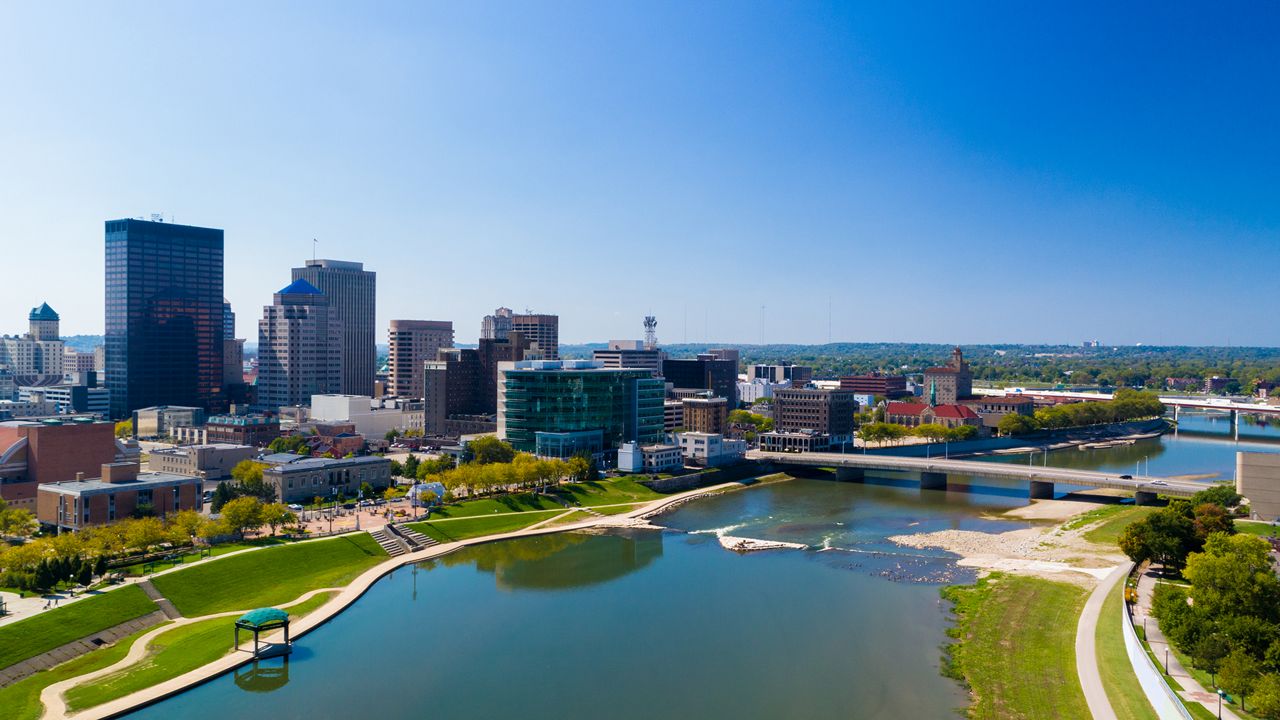






Please add profiles of those who were born, lived or died in Dayton, Ohio.
Dayton is the county seat of Montgomery County.
Dayton was founded on April 1, 1796, by 12 settlers known as the Thompson Party. They traveled in March from Cincinnati up the Great Miami River by pirogue and landed at what is now St. Clair Street, where they found two small camps of Native Americans. Among the Thompson Party was Benjamin Van Cleve, whose memoirs provide insights into the Ohio Valley's history. Two other groups traveling overland arrived several days later.
In 1797, Daniel C. Cooper laid out Mad River Road, the first overland connection between Cincinnati and Dayton, opening the "Mad River Country" to settlement. Ohio was admitted into the Union in 1803, the village of Dayton was incorporated in 1805, and chartered as a city in 1841. The city was named after Jonathan Dayton, a captain in the American Revolutionary War who signed the U.S. Constitution and owned a significant amount of land in the area. In 1827, construction on the Dayton-Cincinnati canal began, which would provide a better way to transport goods from Dayton to Cincinnati and contribute significantly to Dayton's economic growth during the 1800s.
Innovation led to business growth in the region. In 1884, John Henry Patterson acquired James Ritty's National Manufacturing Company along with his cash register patents and formed the National Cash Register Company (NCR). The company manufactured the first mechanical cash registers and played a crucial role in the shaping of Dayton's reputation as an epicenter for manufacturing in the early 1900s. In 1906, Charles F. Kettering, a leading engineer at the company, helped develop the first electric cash register, which propelled NCR into the national spotlight. NCR also helped develop the US Navy Bombe, a code-breaking machine that helped crack the Enigma machine cipher during World War II.
Dayton has been the home for many patents and inventions since the 1870s. According to the National Park Service, citing information from the U.S. Patent Office, Dayton had granted more patents per capita than any other U.S. city in 1890 and ranked fifth in the nation as early as 1870. The Wright brothers, inventors of the airplane, and Charles F. Kettering, world-renowned for his numerous inventions, hailed from Dayton. The city was also home to James Ritty's Incorruptible Cashier, the first mechanical cash register, and Arthur E. Morgan's hydraulic jump, a flood prevention mechanism that helped pioneer hydraulic engineering. Paul Laurence Dunbar, a poet and novelist, penned his most famous works in the late 19th century and became an integral part of the city's history.
Powered aviation began in Dayton. Orville and Wilbur Wright were the first to construct and demonstrate powered flight. Although the first flight was in Kitty Hawk, North Carolina, their Wright Flyer was built in Dayton, and was returned to Dayton for improvements and further flights at Huffman Field, a cow pasture eight miles northeast of Dayton, near the current Wright Patterson Air Force Base.
When the government tried to move development to Langley field in southern Virginia, six Dayton businessmen including Edward A. Deeds, formed the Dayton-Wright Airplane Company in Moraine and established a flying field. Deeds also opened a field to the north in the flood plain of the Great Miami River between the confluences of that river, the Stillwater River, and the Mad River, near downtown Dayton. Later named McCook Field for Alexander McDowell McCook, an American Civil War general, this became the Army Signal Corps' primary aviation research and training location. Wilbur Wright also purchased land near Huffman prairie to continue their research.
During World War I, the Army purchased 40 acres adjacent to Huffman Prairie for the Fairfield Aviation General Supply Depot. As airplanes developed more capability, they needed more runway space than McCook could offer, and a new location was sought. The Patterson family formed the Dayton Air Service Committee, Inc which held a campaign that raised $425,000 in two days and purchased 4,520.47 acres northeast of Dayton, including Wilbur Wright Field and the Huffman Prairie Flying Field. Wright Field was "formally dedicated" on 12 October 1927. After World War II, Wright Field and the adjacent Patterson Field, Dayton Army Air Field, and Clinton Army Air Field were merged as the Headquarters, Air Force Technical Base. On 13 January 1948, the facility was renamed Wright-Patterson Air Force Base.
A catastrophic flood in March 1913, known as the Great Dayton Flood, led to the creation of the Miami Conservancy District, a series of dams and hydraulic jumps installed around Dayton, in 1914. Like other cities across the country, Dayton was heavily involved in the war effort during World War II. Several locations around the city hosted the Dayton Project, a branch of the larger Manhattan Project, to develop polonium triggers used in early atomic bombs.
Cemeteries
Links
The Great Dayton Flood w/video
National Aviation Hall of Fame
The Woodland Cemetery & Arboretum
National Underground Railroad Freedom Center
